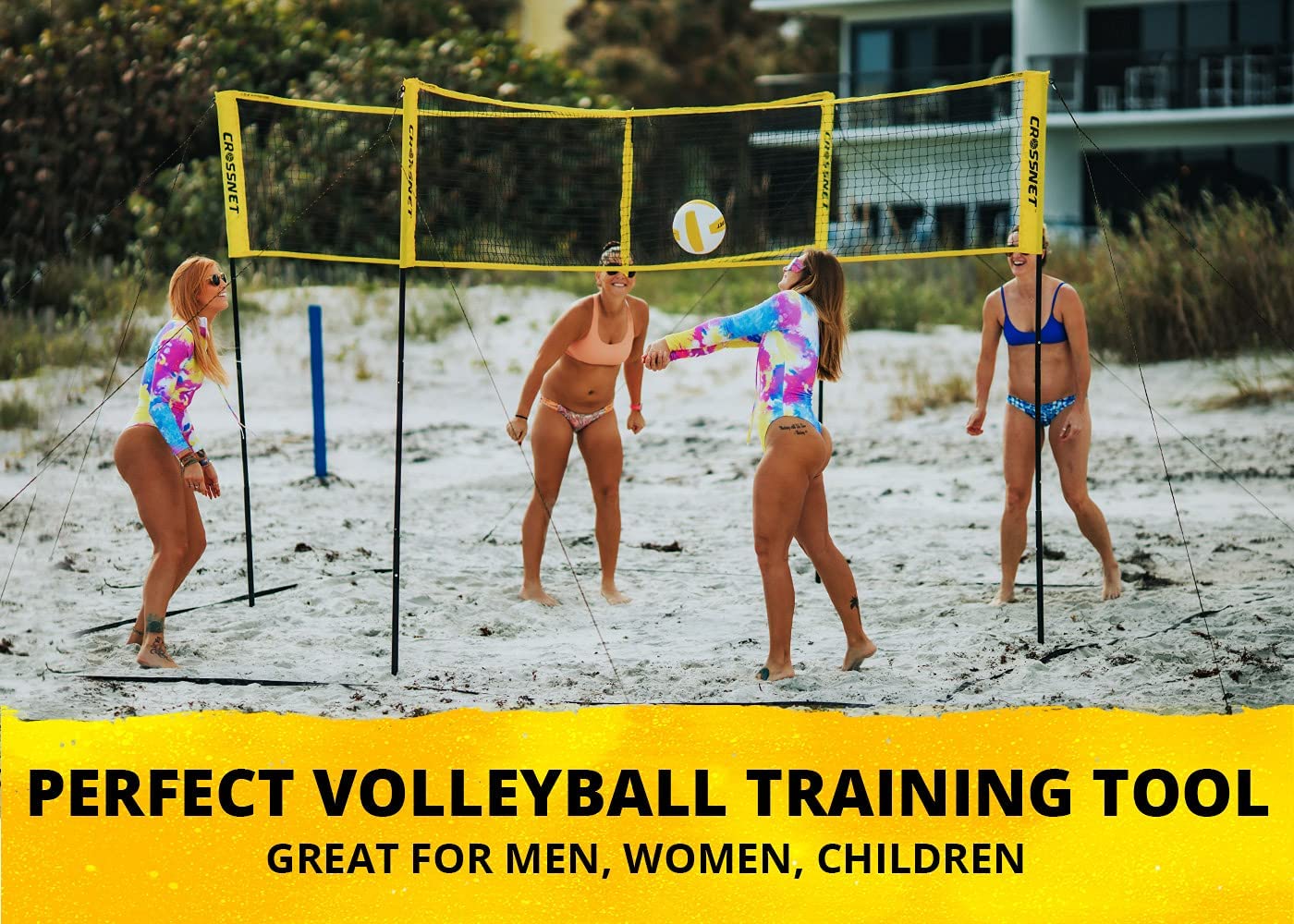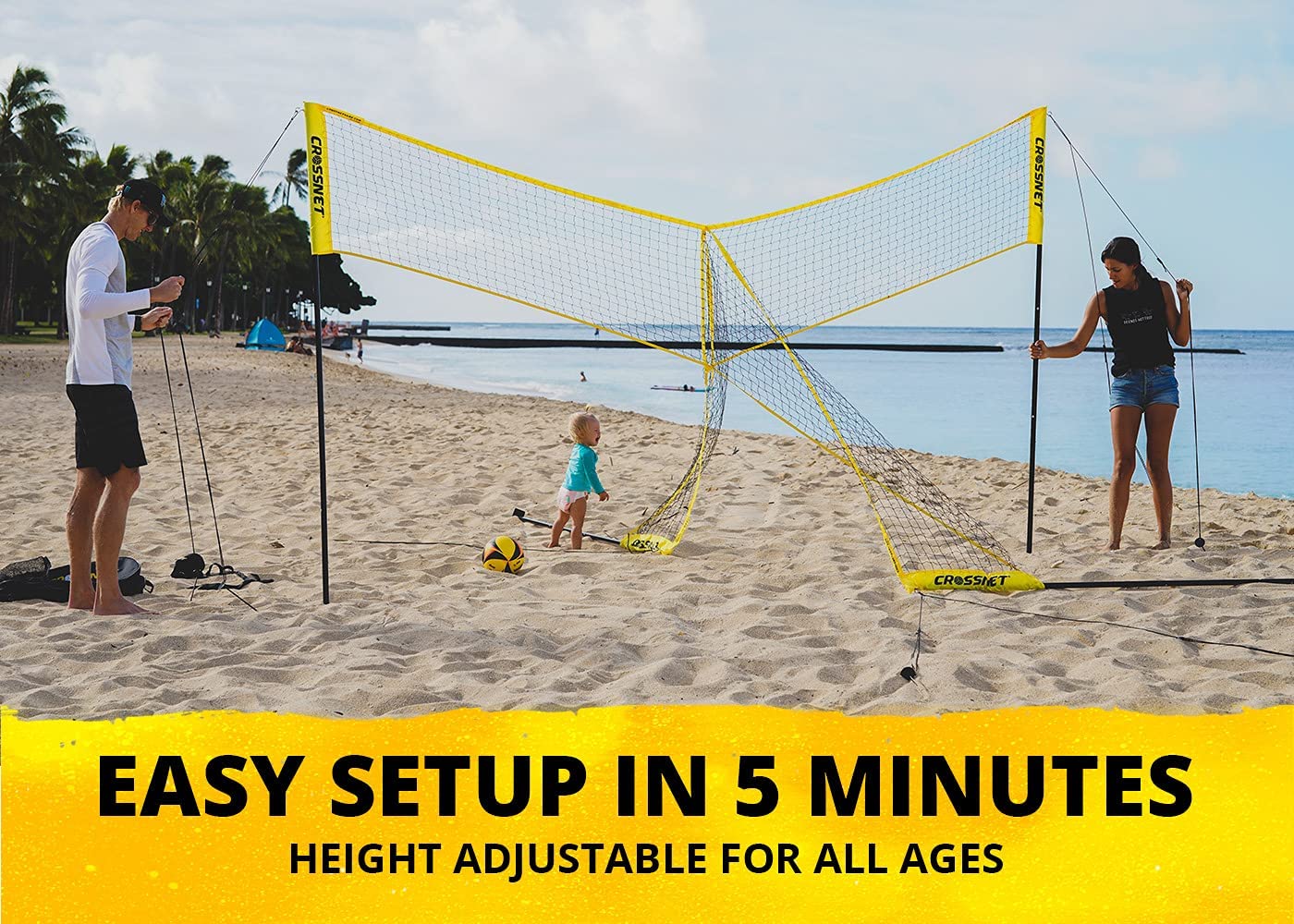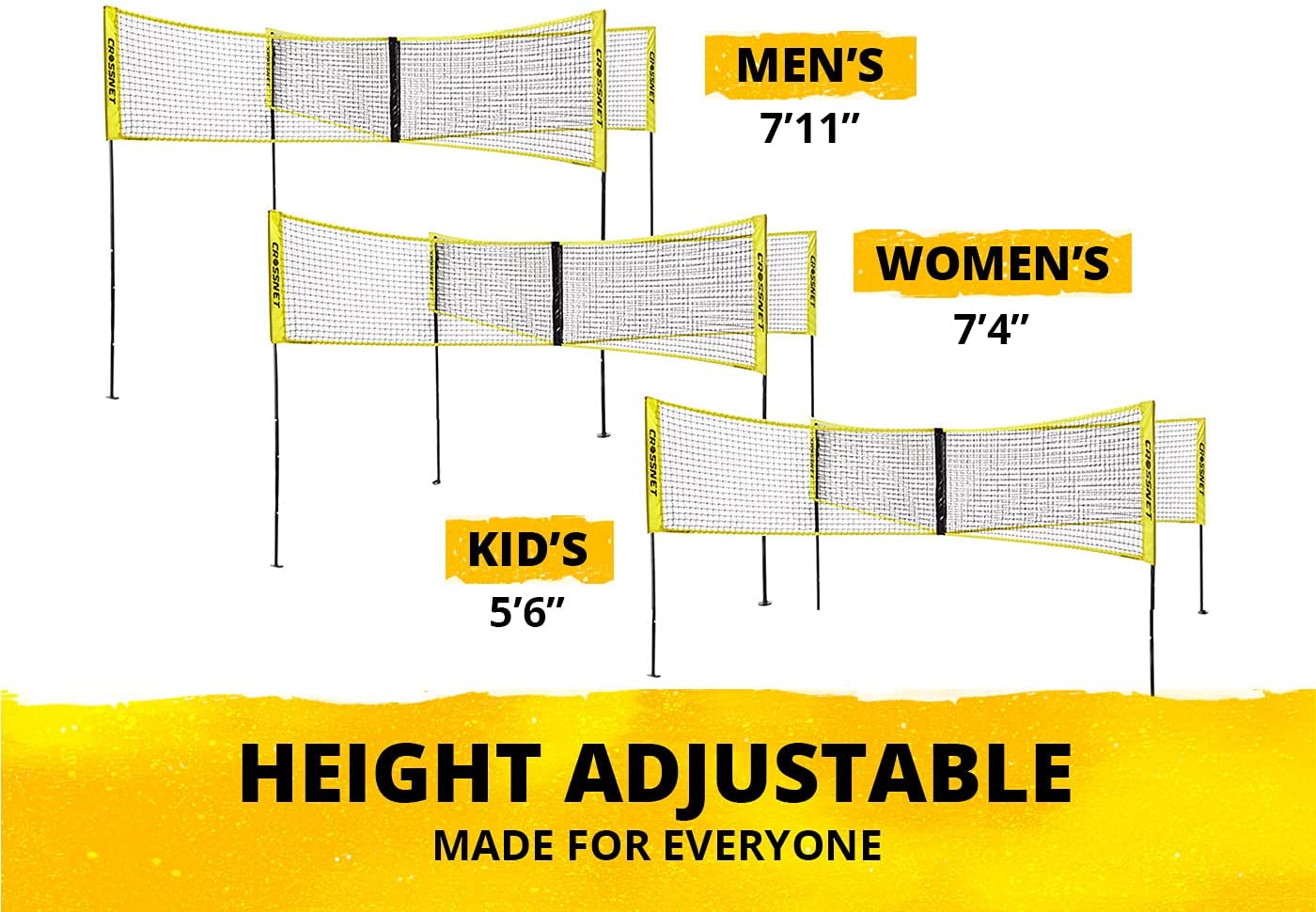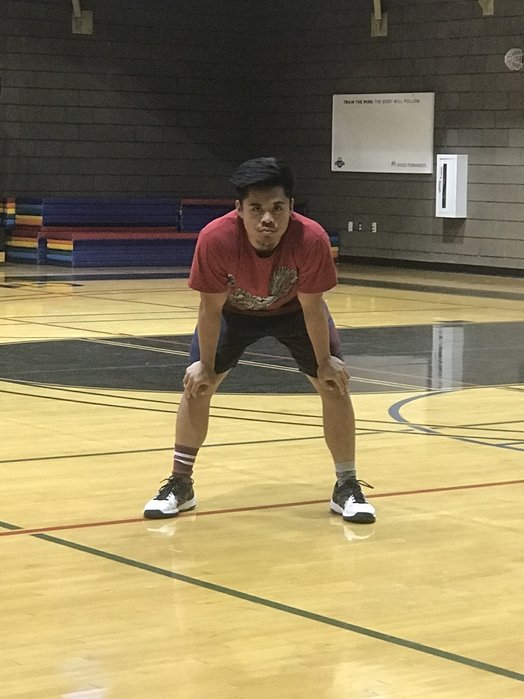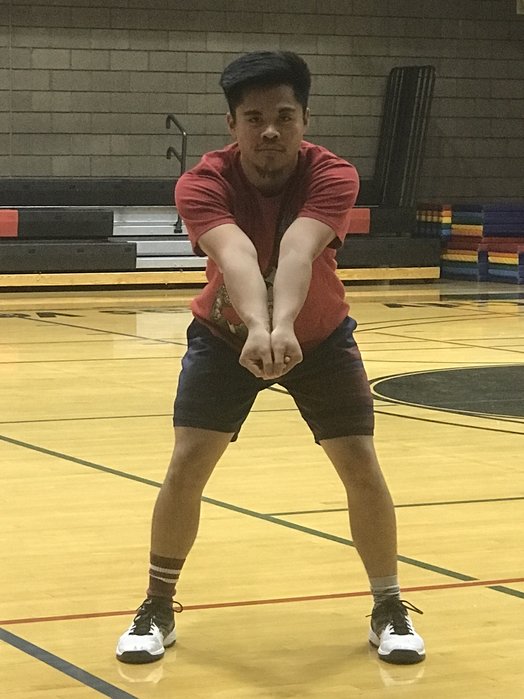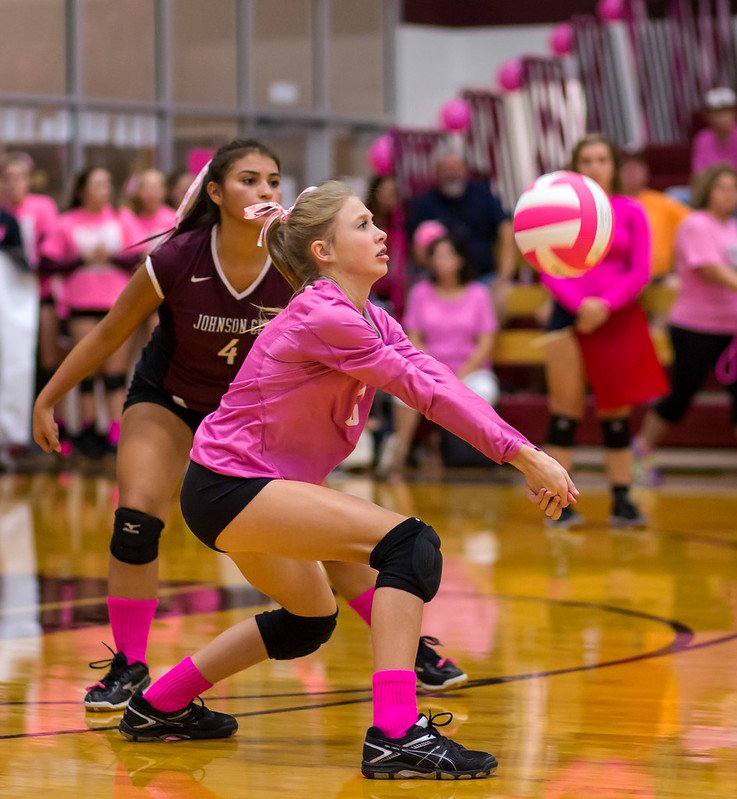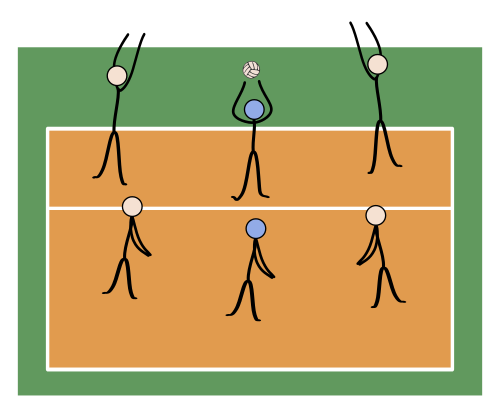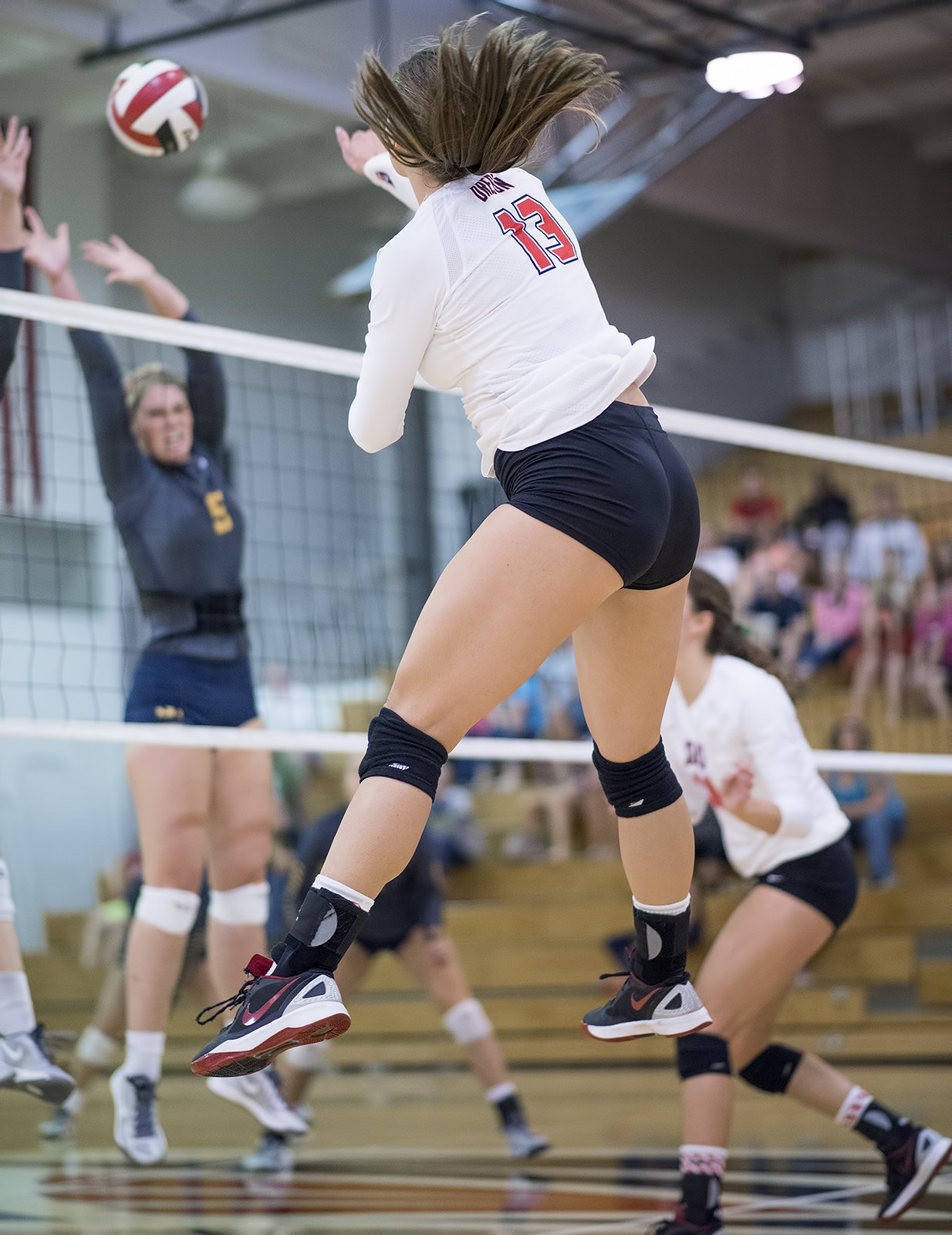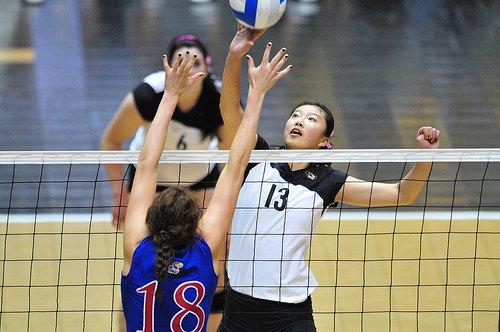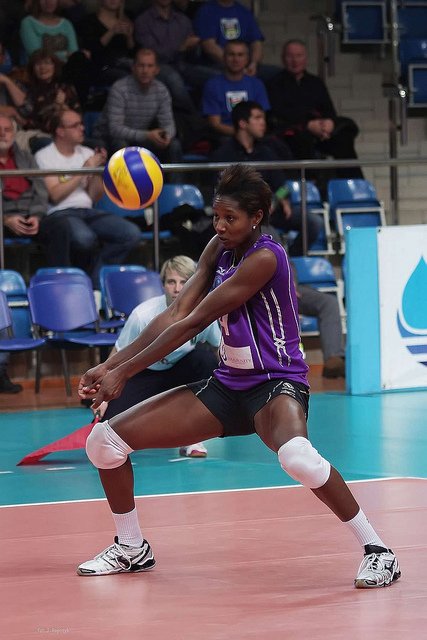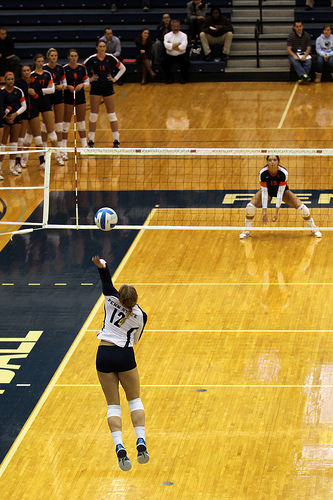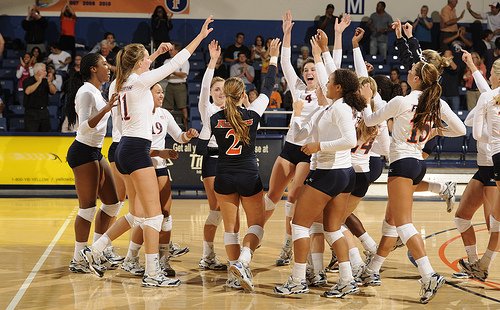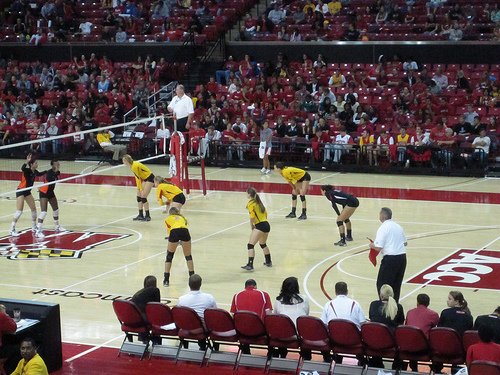How to play volleyball
How to play volleyball
Volleyball Rules
Variations of the game volleyball have been in circulation since around 1895. The game has evolved since then and it was in 1964 where the sport entered its first Olympic games. The sport now has a global following with nations from around the world professionally competing. The pinnacle of the sport comes in the Olympic Games were the best players are often on show.
Object of the Game
The object of volleyball is to hit the volleyball over the net (by only using your hands) running through the centre of the court whilst trying to get it to bounce in your opponents half. The opposing team have to try and prevent the ball from bouncing before returning the ball. Games are played out in best of 3 or 5 sets and the team with most sets at the end of the game wins.
Players & Equipment
The court is of a rectangular shape and measures 18m x 9m. Running across the court is a 2.43m high net with the ball measuring 8 inches in diameter and weighing between 9 and 10 ounces. Around the outlines of the court is an out of bounds area and if the ball were to bounce in these sections then a point would be awarded to the opposing team.
Each team gets up to two timeouts per set of 30 seconds each. After each set the amount of timeouts resets back to two regardless of how many have been used previously.
Scoring
To score a point the ball must hit the ground within the outlined section in your opponents half. You can also score a point by your opponent failing to hit the outlined section within your half or your opponent hitting the ball into the net. A point can be scored off either teams serve.
A player serving must do so from behind the base line and can use either an over or underarm action and hit with only the hand. Once the serve has been made the sever can join their team in-play and battle out the point.
Each team is allowed to hit the ball three times before the ball must be returned. A player is not allowed to hit the ball twice in succession. If the ball hits the boundary line then the ball is deemed to be in-play. The defensive team can jump and try to block the ball returning to their side of the court. If a block attempt is made and the ball bounces in their opponents half then a point is awarded. If after the block the ball bounces out then a point is awarded to the opposing team.
Each game is played to 25 points and must be two points clear. If the scores reach 24-24 then the game is played until one team leads by two.
Winning the Game
To win the game you must score more points than your opponents. The best of 3 or 5 sets are generally played and the winners will be the first team to reach the required number of sets.
How to play volleyball
Bump a Volleyball
Spike a Volleyball
Rotate in Volleyball
Set a Volleyball
Serve a Volleyball Overhand
Hit a Volleyball
Do an Underhand Serve
Dig a Volleyball
Practice Volleyball Without a Court or Other People
Be Good at Volleyball
Serve a Volleyball
Dress Appropriately for Volleyball Practice
Hang a Volleyball Net
Be a Better Volleyball Player
Make Your School’s Volleyball Team
Jump Serve a Volleyball
Teach Volleyball to Kids
Jump Higher for Volleyball
Score in Volleyball
Play Beach Volleyball
Plan a Volleyball Tournament
Pack a Volleyball Bag for Practice and Games
How to play volleyball
The basics, the moves, the top tips. It’s all here!
Packed with thrills, bumps, sets and spikes, volleyball is a brilliant spectator sport – but it’s even better when you get stuck in yourself. This high-speed game requires athleticism, endurance and power.
If you’re a beginner, there are plenty of ways to build up your skills and learn how to play volleyball – both indoor and beach. Say goodbye to the sidelines and hello to the adrenaline-packed court with this handy guide. We’ll take you through the basics, cover the key moves to learn and give you top tips on how to develop your prowess on the court.
What are the basics of volleyball?
If you’re thinking about taking up this exhilarating sport or just want to learn more, read through our basic rules on how to play volleyball. From team formations to how to score a point, we’ll help you pick up the essential rules before you get started.
An indoor volleyball match is the best of five games. The team who takes the majority (three games) is the overall winner of the match. For beach volleyball, it’s best of three.
To win a game, a team must score 25 points with a two-point difference. If they’re too closely matched, the game can continue over the 25-point maximum. On the final deciding game of the match it’s only played until 15 points, but the two-point difference still applies. In beach volleyball, a game is played to 21 points, with the same final round and tiebreak rule. You can find out more in our video guide to beach volleyball.
Each indoor volleyball team consists of six players, whereas beach volleyball is played in teams of two. For indoor volleyball, there are a number of positions. Usually, there are three players at the front near the net and another three towards the back of the court.
For the first game, the teams will play a short volley to decide who will serve. Then the loser of the previous game will serve for the duration of that game.
A rally begins with a serve. The server must take their shot from behind the end line and choose between an underhand or overhand shot. It’s fine for the ball to graze the net, as long as the ball falls into the other side of the court.
A point is scored when a team wins a rally. Every rally begins with a serve and ends when a team wins a point. They do this in one of two ways. If your team sends the ball over the net and the defending team fail to return the ball, you score a point. You can also win a point if the other team hit the ball out of the designated court boundary. If a player on the other team makes a fault, it’s also possible for your team to win a point.
Every time a team wins a point, they will rotate their position in a clockwise direction around the court.
A team can hit the ball to each other a maximum of three times before returning it to the other side of the court.
What are the positions in volleyball?
For beach volleyball, there are only two players per team. However, indoor volleyball is a little bit more complicated. Each team has six players, with three at the front in the attack zone and three in the back in the defence zone. Here’s some information on who does what when playing volleyball:
Outside hitter: As you face the net, this player stands at the front-left of the court in the attack zone. Sometimes called the wing spiker, they often attack the ball a setter has prepared for them. While the ball is in play they can often work across the front and back row.
Right side hitter: This player has similar responsibilities to the outside hitter, but they focus on the right-hand side of the court.
Opposite hitter: This is the player who scores the most points in the game. Their position is usually in the back left corner of the court. Not only do they need to score points, but, because they play against the other team’s opposite hitter, they need defensive skills too.
Setter: Often called the playmaker, this player is like the quarterback of the team. They run the offensive strategies and set the ball up for the attackers to score. They’re often in the right-back of the court and can work both rows.
Middle blocker: Sitting in the middle, right in front of the net, this player’s main responsibility is to block attacks from the other team. They’re also a key passer who helps get the ball to the setter.
Libero: This is a back row player, who can only work at the rear of the court. They usually wear a different colour top to the rest of the team and can enter and exit the game without substitution. They also can replace any other player and often swaps places with the middle blocker.
You can find out more in our video, Sport Guide: Examining Volleyball.
What are the rules of indoor and beach volleyball?
Here are a few things you need to know to ensure you don’t violate any rules or give the other team a point. You must not:
How to play volleyball: what are the moves?
There are a few ways you can play the ball in volleyball. Here are the main moves you can play to help you get started and understand what you can do to develop your game.
Beginners: When you first start off, it’s a good idea to begin by catching and tossing the ball so to get a feel for the rules while keeping the ball in play for longer. Once you’ve mastered the rules and the flow, it’s time to start bringing hits into the game. For an expert opinion, see what three-time gold medallist Karch Kiraly thinks are the qualities needed for volleyball success.
Passing: This is where a player receives the ball from the server and passes it to the playmaker. This is usually done with an underhand bump in a short, controlled manner, with minimal arm swing. It’s quite literally a bump, rather than a hit.
Setting: The setter is the playmaker in volleyball. They prepare the ball so it’s well-placed for an attacker to shoot and score a point for their team. Overhead setting is when a player places both their hands above their forehead, creating a triangle shape with their thumbs and index fingers. They push the ball up with their fingers, with the attacker ready to take their shot.
Spiking: This is one of the most impressive-looking moves in the game. A spike is generally when a player runs, jumps and hits the ball over the net with a powerful swing. Usually this is a move for an attacker or shooter, as these big hits usually win points. If you’re a beginner, try to avoid spiking until you can maintain a long rally.
Blocking: A block is a defensive move used at the net. When an attacker moves to shoot, a maximum of three players on the other team come close to the net and jump just after the attacker with their arms up. When the ball comes over the net, it’ll be blocked by the players and either move into their side or back towards the opposing team.
Digging: When the ball is heading towards the floor after an attack, a defender from the back row can run or dive forward to bump the ball back up and pass it to another team member.
Whether you want to be competitive or not, just give it a go. And if you really enjoy it, see what the Czech women’s beach volleyball team does to train.
How to Play Volleyball
Skills, Positions, Rules, and Strategy
When first learning how to play volleyball, you need to understand the object of the game. The object of the game is to beat your opponents to a predetermined number of points.
In the old days, volleyball was played to 15 points and a point is scored only when the serving team wins the rally.
Today, rally scoring is primarily used which means a point is scored as a result of each play. Most volleyball games today are rally scoring and played to 25 points.
To win the game, you must score more points than your opponent and be leading by at least 2.
Winning the Rally
When first learning how to play volleyball, it’s important to understand how to score points.
To score a point in volleyball, a team must win a rally. A rally is begun by a server serving the ball into play. The ball is served over the net to the opposing team.
The opponent then gets a maximum of three hits to return the ball back over the net.
A team wins a rally if.
Basic Rules
Indoor volleyball is played with two 6 player teams. Each team has 3 front row players and 3 back row players. The front row players mainly hit and block. The back row players mainly pass and dig.
The teams are separated by a net over which the ball must cross.
In the menВ’s game, the net is positioned to 2.43 meters high.
In the womenВ’s game, the net is positioned to 2.24 meters high.
Basic Skills
There are some basic volleyball skills and court positions that you must know before you start playing volleyball.
The skills listed here are just basic.
The basic skills for playing volleyball are serving, passing, setting, attacking, blocking and digging.
The serve is what begins the game.
Passing the ball is the skill that’s performed by the player receiving the ball.
Setting is the action of playing the ball to a teammate. Setting is usually done in an overhead motion using the hands. Players that have a hard time getting in good position to hand set may elect to set using a forearm passing motion. This is called bump setting.
Attacking or spiking is the action of sending the ball over the net to the opponent’s court. Attacks are usually done by taking steps to approach the net to jump and hit the ball. The volleyball approach and hit is often thought of as the most fun skill in volleyball.
A block is the action of trying to prevent the ball from crossing the net into your court.
Digging is the action of playing the ball in a way that prevents the ball from touching the court after an attack by the opponents.
To get good at these volleyball skills require improving physical proficiency and hand-arm-and-eye coordination. Being able to effectively communicate with your teammates and having an understanding of how to play volleyball will highly influence how well you perform these skills.
The Players
On a very basic level, players on the team can be divided into 2 types.
The Positions
Here are some basic volleyball positions you should become familiar with when learning how to play volleyball.
How to Play Volleyball Related Pages
Short Player Tips
Too short for volleyball? You might be worried you can’t compete with taller players. The fact is, height is as big a deal in volleyball. Yes, there’s an advantage
Pepper Tips
How to pepper in volleyball. Learn the pepper drills and best way to pepper with a partner. Volleyball pepper for pass, set, hit. Control partner drills for practice.
Scholarships
Top 10 things you need to do to get a scholarship for volleyball. How to get an NAIA scholarship for volleyball. What coaches want and what you can do to impress.
Hitting Smarter
Hitting smarter and techniques for spiking. Tips for jousting and beating the blocker. Do you broad jump into the ball? Or do you focus on jumping more straight up and getting high?
Coaching Youth
Coaching youth can be a very challenging task. While striving to win is an objective, it’s not the main goal for volleyball at the beginning level.
Court Dimensions
Official volleyball court dimensions for volleyball. Volleyball court rules and regulations for net height, center-line, attack line, free zone, and volleyball court specificationsВ…
How to Spike
Learn how to spike. The basics of volleyball attacking including the volleyball approach, 3 step approach, 4 step approach, how to contact the ball.
How to Pass
Learn how to pass. The basics of volleyball passing including the forearm pass, overhead pass, body position, foot position, angle of the arms.
How to Serve
How to serve isn’t as complicated as many player’s think. Underhand serves are the most popular types of serves for beginners. Overhand topspin and float serves are.
Setting
Setting can be difficult to learn if you don’t know proper technique. Good hand position, contacting the ball on all the fingers, setting without.
Formations
U formation using four players and the w formation using five players are the most popular serve receive formations. The two most important considerations.
Four Player Receive
Four player serve receive formations, u shape, semi moon, staggered left, staggered right. The U formation is more common for skilled..
Three Player Receive
With the three person receive alignment it’s much easier to communicate and the three best passers can pass in each rotation. Only having.
Tips for Blocking
Blocking is the most under taught skill. The idea is simple, jump up and reach high over the net. Reading the setter and hitters.
Training Gear
List of important gear and equipment you need to be successful at volleyball.
Learn How To Play Volleyball: Rules, Skills, How To Play and Positions
How do you play volleyball? Quickly learn the basic rules, skills, positions on the court, strategies and tactics needed to play the game.
So you want to learn how to you play volleyball?
Learn How To Play Volleyball?:
The Volleyball Serve
What is a volleyball serve?
The overhand volleyball serve is made with contact of the ball by a player when you first toss the ball with one hand in the air and contact it with force with the other hand in an effort either
Learn How to Play Volleyball:
Volleyball Passing
How Do You Play Volleyball? :
What is Setting A Volleyball?
Coach April Chapple’s Volleyball Passing Tips For Youth Volleyball Players
How Do You Play Volleyball:
What is a Volleyball Spike?
A spike starts with an approach of three but most often four steps.
The first two slow and the last two bigger and faster steps that propel you in the air gathering momentum as you go, to lift you above the top of the net so you contact the ball at its highest height to attack or hit it down into the opposing court.
As you become a better spiker and your hitting technique i mproves, you will learn to spike faster and quicker sets that are lower to the net.
You will also be able to better control the direction of your spikes, propelling the ball either down the line or cross court into the opposing team’s court.
Learn How to Play Volleyball:
What is a Volleyball Block?
On defense the middle blocker blocks all along the net, on offense she will hit and attack primarily from Zone 3, the central area of the net.
Learn How to Play Volleyball:
What’s a Dig?
To «dig a ball» you are in a defensive position, most frequently in the back row, or if you aren’t blocking in the front row and you are positioned outside of your front row blockers as they jump to block a hard driven ball.
You sink your hips low to the floor, below the ball before it gets to you and you use your extended arms in your platform to «dig» or deflect the ball up in the air.
If you are the ‘digger» or defender your job is to dig the ball up high enough in the air and ideally to the middle of the court close to the ten foot line, so that the second contact in the rally can be made.
This second contact is most often made by the setter who runs to this ball where ever it has been dug up to on the court and sets it up to one of her front row hitters, so they can attack it with the third hit so that the rally continues.
Learn How to Play Volleyball:
Where Do I Go From Here?
What you just read was just a warmup!
Just like in volleyball practice, you do a little stretching to warm up your muscles before getting into the real meaty part of practice.
If you’d like learn how to play volleyball check out the pages below.
Whats A Libero in Volleyball And Why Was The Libero Position Created?
Whats a libero in volleyball? The position was created because event organizers were looking to keep sponsor support high and make the men’s game more exciting
Volleyball Positions on the Court: Backrow Rotations in Volleyball
Learn the descriptions and the different backrow volleyball positions on the court and how the rotation in volleyball works in the backrow player positions.
Outside Hitter Volleyball Position What Is The Left Side Hitter’s Job?
Outside hitter volleyball position. The left side hitter usually receives the most sets during a game and are required to pass well and hit to score points.
The Middle Blocker Volleyball Position Offensive and Defensive Duties
Everything you need to know about the middle blocker volleyball position including hitting responsibilities, strategies, tactics and tips.
Volleyball Positions and Rotations 3 Front Row Positions in Volleyball
Learn the descriptions and what the different volleyball positions and rotations work for each of these front row player positions.
How To Pass A Volleyball Consistently To The Setter At The Net
Learn two passing tips on how to pass a volleyball consistently when you’re in serve receive to your setter who needs your help running the offense
How To Pass In Volleyball Better With This Ball Control Passing Guide
Ball control is the biggest part of learning how to pass in volleyball consistently to your setter when your team is in serve receive formation.
Volleyball Positions: What Are The Six Volleyball Roles On The Court?
Here’s an extensive breakdown of the volleyball positions on the court you can pick to specialize in.including setter, hitter, opposite, middle blocker libero.
Understand The 6 Rotation Volleyball Positions and Zones on the Court
What’s the rotation in volleyball? The 6 rotation volleyball zones or positions that players rotate in and out of depending on the offense their team runs.



























